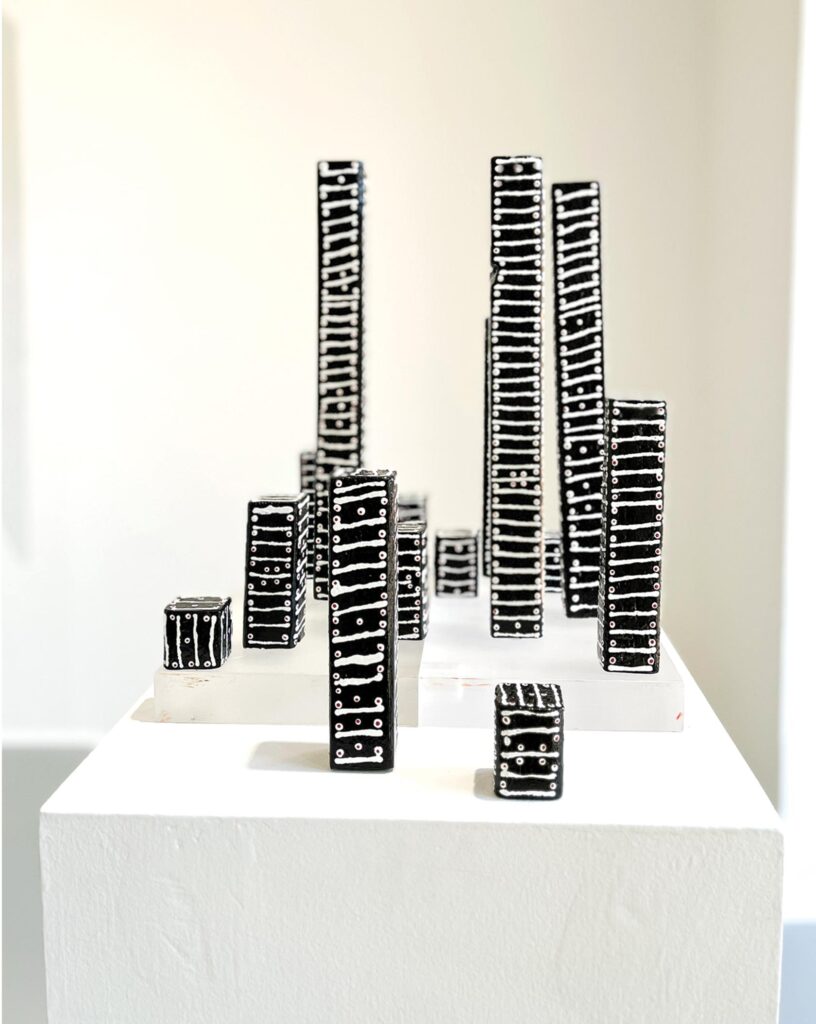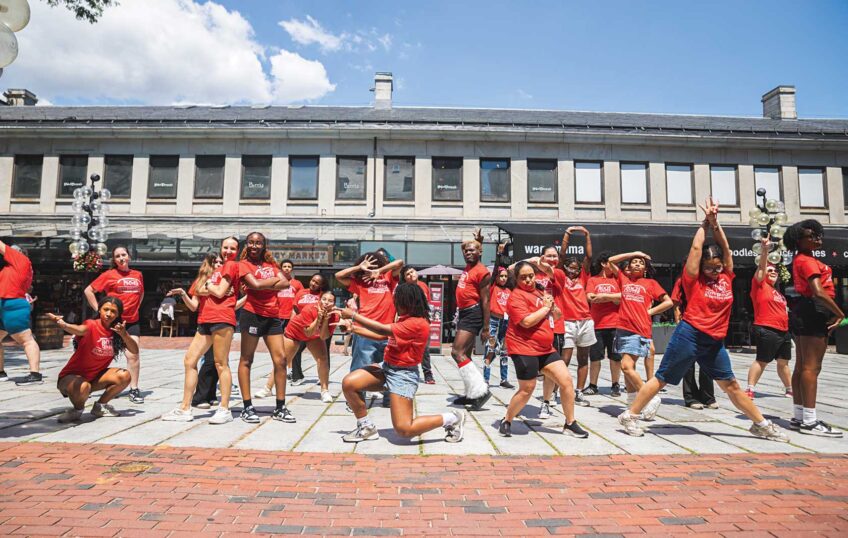‘Cedric Harper: ANCESTRAL LANGUAGE’ at BCA probes language, environment

At first glance, the works in “Cedric Harper: ANCESTRAL LANGUAGE,” running at the Boston Center for the Arts through April 15, look minimalistic. But on closer inspection, these intricate pieces reveal layers of texture, paint and symbolism.
Harper draws on his experience as a Black gay man to ruminate on love, loss, style, queerness and perseverance in this exhibit of sculptural works. Each of his pieces is covered in symbols, dots, lines, curves and staccato flicks of the brush. These symbols invoke language, they look ancient and powerful, but they don’t correlate to a known script we can read.
“My creative work comes from manipulation of language symbols and dreams, whether that transforms itself into tables, sculpture, totems or panels as its form,” says Harper in his artist statement.

Installation view of “Cedric Harper: ANCESTRAL LANGUAGE” at BCA.
The feeling of language here is derived from shapes in nature, and the message is one of foreboding. Harper uses found objects, pulling pieces that have been discarded and creating these dynamic artworks with them. The use of found materials comments on material consumption and the path of environmental devastation created by it. Were we to be able to read the symbols on his totems, they might be a natural cry for help.
“All pieces start from recycled materials. Items that have been disregarded, rejected or tossed out as trash. The subject is usually determined by the recycled materials as to what it will become — a table, a totem, a sculpture,” says Harper. “Those materials are cleaned, repaired, re-imagined and become what I see in them.”
“ANCESTRAL LANGUAGE” is part of the “1:1 Exhibition” series at Boston Center for the Arts’ Mills Gallery that pairs one curator with one artist for a collaborative project. The exhibits either introduce a new artist or put the spotlight on a new aspect of an experienced artist.
Here, Harper’s work creates an immersive environment where artworks dangle from the ceiling, perch on low tables by the ground, and adorn the walls. The works aren’t physically large, but their presence demands attention. There’s no such thing as a casual walk around this gallery space. Visitors are pulled in by the magnetic force of each piece.
Harper’s sculptures are intimate universes. They are so layered with painted symbols, attached objects and other materials, that viewers see something new in them at every glance. The works require you to get close and personal with them, to stare, to ponder, to come back again for another look.







